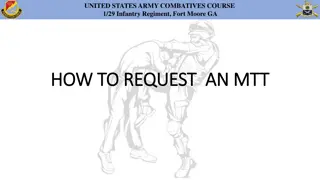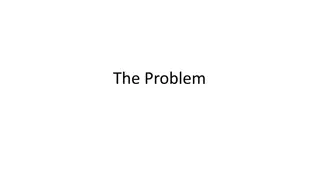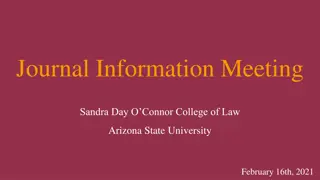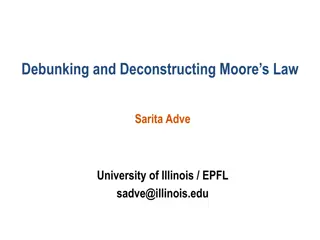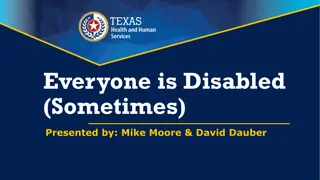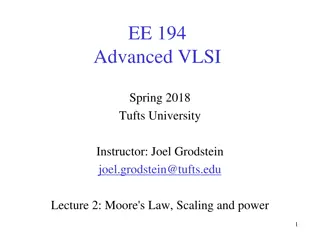
Boxing Injury Case Study: Neck Pain and Dizziness
"Explore a case study of a 25-year-old boxer presenting with dizziness and neck pain, focusing on the onset, mechanism of injury, and common boxing-related injuries like concussions and whiplash. Learn about symptoms, assessment, and monitoring for these conditions."
Uploaded on | 2 Views
Download Presentation

Please find below an Image/Link to download the presentation.
The content on the website is provided AS IS for your information and personal use only. It may not be sold, licensed, or shared on other websites without obtaining consent from the author. If you encounter any issues during the download, it is possible that the publisher has removed the file from their server.
You are allowed to download the files provided on this website for personal or commercial use, subject to the condition that they are used lawfully. All files are the property of their respective owners.
The content on the website is provided AS IS for your information and personal use only. It may not be sold, licensed, or shared on other websites without obtaining consent from the author.
E N D
Presentation Transcript
Presentation of a Case Study By Karen Eccles & Connor Moore Photo by Hermes Rivera on Unsplash
A 25-year old boxer complaining of dizziness with neck pain It is difficult to diagnose neck pain conditions - signs and symptoms are very similar. It is important during the subjective assessment (SA) to establish: The onset of injury when did the symptoms start? Mechanism of Injury (MOI) cause? Red flags and contraindications The area, nature and intensity of the neck pain Past medical history and current medications Psycho/social factors The SA will provide clues as to the source of the client s neck pain and dizziness.
Onset and Mechanism of Injury (MOI) During the subjective assessment (SA) it is important to consider when the neck pain and dizziness began (the onset) and the Mechanism of Injury (MOI). Boxing is a very physical sport. In competition the main objective to achieve a technical knock out (TKO), or a complete knock out (KO) of an opponent. (Neidecker et al. 2019). The following injuries are more common in boxing and likely to be the cause of neck pain and dizziness: - Sports-related concussion (SRC) - Post-concussion syndrome - Whiplash Associated disorders (WAD) - Cervicogenic Headaches - Wry Neck
Symptoms of common boxing injuries Sports-related concussion (SRC) Caused by direct blow to head, face & neck (Echemendia et al., 2017) month of SRC Post-concussion syndrome Whiplash Associated Disorders (WAD) An acute acceleration- deceleration injury (Spitzer et al., 1995) Cervicogenic Headaches Wry Neck Three or more of symptoms below experienced within 1 Secondary headaches caused by an underlying condition Acute onset of pain caused by a sudden quick movement or sleeping in an awkward position Headache, dizziness, disturbed sleep & drowsiness, irritability, nausea, difficulty with concentration & memory, foggy feeling, light & noise sensitivity, blurred vision, LoC, confusion, difficulty making eye contact, slurred/slow speech, sluggish/disorientated, slow to react/answer questions Headache, dizziness depression & anxiety, difficulty sleeping, Irritability, feeling tired, low in energy, difficulty concentrating, feeling foggy Onset of neck P gradual and over 24 hours Unilateral headache, constant dull ache, pain & stiffness in the neck, ROM, pain around the eyes, pain triggered by certain movements, light & noise sensitivity, nausea, blurred vision Headache, neck pain or stiffness, difficulty moving head, swollen neck muscles, chin tilted to one side, one shoulder higher than the other Headaches, dizziness, depression, disturbed sleep, Irritability, fatigue, neck pain & stiffness, tenderness in upper body, tingling or numbness in the arm Post-concussion syndrome can be monitored by Sport Concussion Assessment Tool 5th Edition (SCAT 5), (McCory et al., 2016) Less common symptoms: blurred vision, tinnitus, problems with memory & concentration (Loosemore et al., 2015) reported the incidence of concussion as low - 0.53 concussions for every 1000 hours of competing/training
Red Flags and Contraindications Neck pain and dizziness could be an indication of a not to miss Red Flag condition or Contraindication that may require further medical assessment and referral to a GP: Cardiac heart attack, transient ischemic attack or cardiomyopathy Cervical arterial dysfunction vertebrobasilar insufficiency (VBI) and cervical arterial dissection. Cranio-cervical ligament injury Cervical Radiculopathy Fracture of cervical vertabrae Cancer Epstein Barr virus Rheumatoid Arthritis Infections e.g. Meningitis Red Flags and contraindications should be eliminated during the SA before progressing further with the clinical examination.
The area, nature and intensity of Pain It is important to establish the area, nature and intensity of the pain: Area of pain will give an indication of the source Nature of the pain can give an indication of the pain mechanisms. Is the pain catching, an ache, piercing or burning? Aggravating & easing factors establish the movements, activities and postures that aggravate or ease the pain. High or low irritability high irritability, pain intensity and acuteness of injury will limit the physical examination and the intensity of treatment.
Past medical history, current medications, psycho and social factors Past medical history & current medications previous injuries or illnesses and current prescribed medications may have an impact upon current injury. Psychological factors fear of movement, changes in training patterns and participation of sport, how the client is coping with and managing the pain (reliance on medication), anxiety and depression gives the therapist a clearer impression of how the injury is affecting their client and how to manage the injury and subsequent treatment. Social factors pressures in work and family life that may have an impact upon the client s injury
Differential Diagnosis Mechanism Punch to the head during competitive boxing bout Subjective Ax Neck pain and headaches after boxing match Objective Ax DDX Treatment Refer to GP for MRI Head tilted slightly to the right guarding of left side of neck? WAD grade III MSK & Neurological signs Disturbed sleep Palpation: Tenderness over spinous processes. Tension in muscles around the neck. Red in colour & feel warm UFT, Lev Scap & SM Refer to Neuro- psychologist WAD grade IV Cervical spine # or dislocation Feeling tired Ringing in ears AROM in Flex, Ext, Rotation, Lateral Flex Soft CX disc lesions Dizziness Sore shoulders, upper back and arms Neurological tests: Myotome test - weakness in resisted shoulder girdle elevation (C4) & abduction (C5) Sensory test - reduced sensation (C5) on left arm. Sports-related concussion Tingling down left arm EMS of neck PROM & Resisted ROM not tested too painful
Conclusion In this case, during the SA and OA there were a number of red flags that gave cause for concern: Disturbed sleep Acute onset of headache and dizziness Increase in the severity of pain Neurological signs down the left arm The above signs could indicate cervical arterial, vertebral or ligament damage. There were also concerns regarding SRC. Management of the client was conservative and the assessment was limited because of the high intensity of pain and irritability of the condition which was in the acute phase. The findings from the assessment lead to the conclusion that the client should be referred to a GP for MRI scan and also to a neuropsychologist. The client should also be assessed for SRC. A multimodal treatment programme comprising of motion, stretching and strengthening exercises and manual therapy can be put in place after the client has been cleared of any cervical damage or received medical treatment.
References References Echemendia, R. J., Meeuwisse, W., McCrory, P., Davis, G. A., Putukian, M., Leddy, J., Herring, S. (2017). The Sport Concussion Assessment Tool 5th Edition (SCAT5): Background and rationale. British Journal of Sports Medicine, 51(11), 848 850. Elkin, B. S., Elliott, J. M., & Siegmund, G. P. (2016). Whiplash injury or concussion? A possible biomechanical explanation for concussion symptoms in some individuals following a rear-end collision. Journal of Orthopaedic and Sports Physical Therapy, 46(10), 874 885. Loosemore, M., Lightfoot, J., Palmer-Green, D., Gatt, I., Bilzon, J., & Beardsley, C. (2015). Boxing injury epidemiology in the Great Britain team: A 5-year surveillance study of medically diagnosed injury incidence and outcome. British Journal of Sports Medicine, 49(17), 1100 1107. McCrory, P., Meeuwisse, W., Dvo k, J., Aubry, M., Bailes, J., Broglio, S., Vos, P. E. (2017). Consensus statement on concussion in sport the 5th international conference on concussion in sport held in Berlin, October 2016. British Journal of Sports Medicine, 51(11), 838 847. Neidecker, J., Sethi, N. K., Taylor, R., Monsell, R., Muzzi, D., Spizler, B., Inalsingh, C. (2019). Concussion management in combat sports: Consensus statement from the Association of Ringside Physicians. British Journal of Sports Medicine, 53(6), 328 333. Spitzer, W.O., Skovron, M.L., Salmi, L.R., Cassidy, J.D., Duranceau J. & Suissa, S. (1995). Scientific monograph of the Quebec Task Force on whiplash-associated disorders: redefining whiplash and its management. In Brukner, P. and Khan, K. (2012). Brukner and Khan s Clinical Sports Medicine. Australia: McGraw-Hill Education



